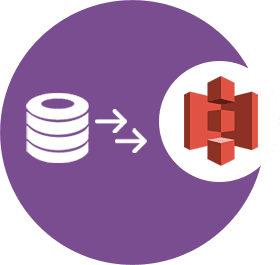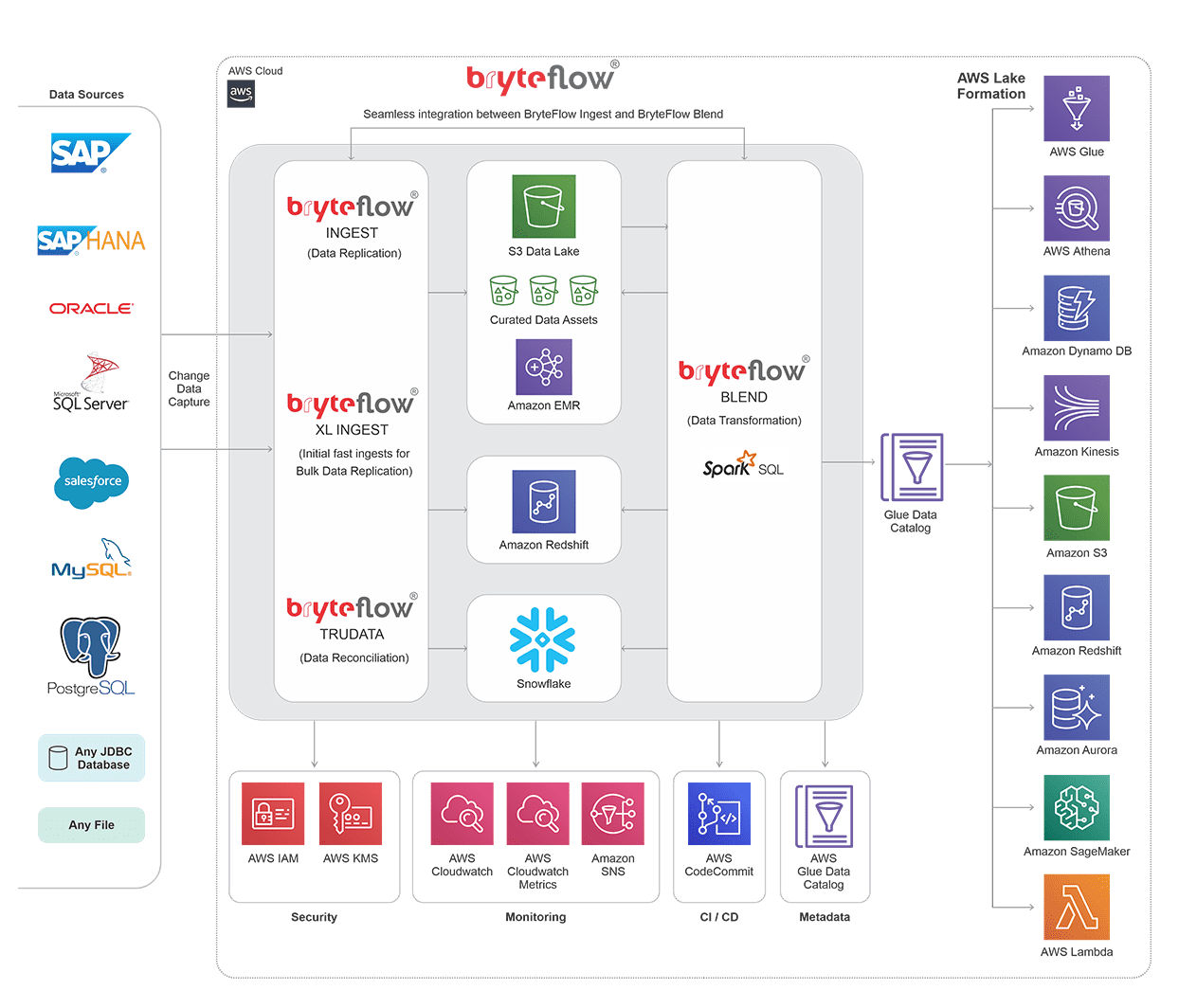Data Replication to Amazon S3
Load SAP data to Amazon S3
The fast, no-hassle way to replicate SAP data to Amazon S3
Looking to replicate SAP data to Amazon S3? Confused about which SAP replication tool to use? There are a number of automated data replication tools that will ETL your SAP data to Amazon S3, however there are certain features that are must-haves when it comes to ideal SAP data replication – we will touch on them below. BryteFlow supports flexible connections to SAP including: Database logs, ECC, HANA, S/4HANA and SAP Data Services. It also supports Pool and Cluster tables. SAP to AWS (Specifically S3) – Know as Easy Method
Learn about BryteFlow for SAP
SAP ETL Tool: Extract data from SAP systems with business logic intact
Why migrate SAP data to S3 with BryteFlow
- Low impact, low latency transactional log replication from SAP to Amazon S3. Create an SAP BW Extractor
- BryteFlow automatically optimises S3 with columnar file formats, partitioning and compression. Create an S3 Data Lake
- BryteFlow integrates seamlessly with AWS Athena, Lake Formation, Glue Data Catalog and Redshift Spectrum to make them run 15x faster. AWS ETL with BryteFlow
- Save on data integration costs by 25 times*. Create an S3 Data Lake in Minutes (S3 Video Turorial)
*Results based on trials conducted at a client site
SAP Extraction using ODP and SAP OData Services (2 Easy Methods)
CDS Views in SAP HANA and how to create one
5 Ways to extract data from SAP S/4 HANA
The SAP Cloud Connector and Why It’s So Amazing
Real-time, codeless, automated SAP data replication to Amazon S3

Can your replication tool replicate really, really large volumes of SAP data to your Amazon S3 data lake fast?
When your data tables are true Godzillas, including SAP data, most data replication software roll over and die. Not BryteFlow. It tackles terabytes of data for SAP replication head-on. BryteFlow XL Ingest has been specially created to replicate huge SQL data to Amazon S3 at super-fast speeds.
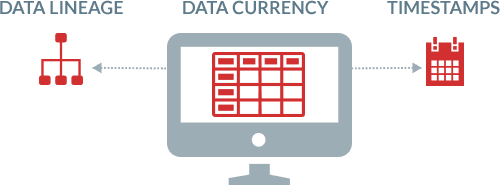
Access Operational Metadata out of the box
BryteFlow keeps operational metadata out of the box of all the extraction and load processes. This can be saved on Aurora if required. The metadata includes currency of data and data lineage. Currency of data shows the status of the data whether it is active, archived, or purged. Data lineage represents the history of the migrated data and transformation applied on it.
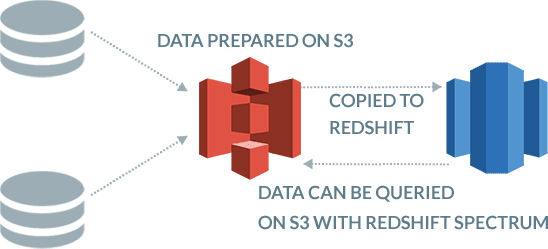
Prepare data on Amazon S3 and copy to Amazon Redshift or use Redshift Spectrum to query data on Amazon S3
BryteFlow provides the option of preparing data on S3 and to copy it to Redshift for complex querying. Or you can use S3 Spectrum to query the data on S3 without actually loading it onto Amazon Redshift. This distributes the data processing load over S3 and Redshift saving hugely on processing and storage cost and time.

How much time do your Database Administrators need to spend on managing the replication?
You need to work out how much time your DBAs will need to spend on the solution, in managing backups, managing dependencies until the changes have been processed, in configuring full backups and then work out the true Total Cost of Ownership (TCO) of the solution. The replication user in most of these replication scenarios needs to have the highest sysadmin privileges.
With BryteFlow, it is “set and forget”. There is no involvement from the DBAs required on a continual basis, hence the TCO is much lower. Further, you do not need sysadmin privileges for the replication user.
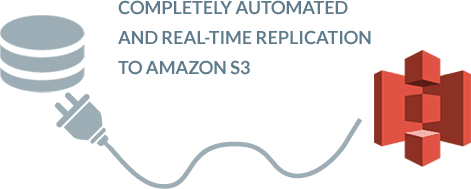
Are you sure SAP replication to Amazon S3 and transformation are completely automated?
This is a big one. Most SAP data tools will set up connectors and pipelines to stream your SAP data to S3 but there is usually coding involved at some point for e.g. to merge data for basic SAP CDC. With BryteFlow you never face any of those annoyances. SAP data replication, data merges, SCD Type2 history, data transformation and data reconciliation are all automated and self-service with a point and click interface that ordinary business users can use with ease.
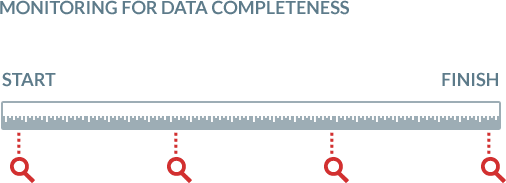
Is your data from SAP to Amazon S3 monitored for data completeness from start to finish?
BryteFlow provides end-to-end monitoring of data. Reliability is our strong focus as the success of the analytics projects depends on this reliability. Unlike other software which set up connectors and pipelines to SAP source applications and stream your data without checking the data accuracy or completeness, BryteFlow makes it a point to track your data. For e.g. if you are replicating SAP data to S3 at 2pm on Thursday, Nov. 2019, all the changes that happened till that point will be replicated to the S3 database, latest change last so the data will be replicated with all inserts, deletes and changes present at source at that point in time.
Extract SAP Data using ODP and SAP OData Services (2 Easy Methods)
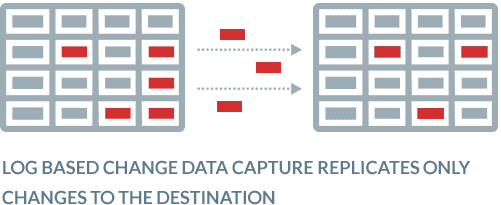
Does your data integration software use time-consuming ETL or efficient SAP CDC to replicate changes?
Very often software depends on a full refresh to update destination data with changes at source. This is time consuming and affects source systems negatively, impacting productivity and performance. BryteFlow uses SAP CDC to S3 which is zero impact and uses database transaction logs to query SAP data at source and copies only the changes into the Amazon S3 database. The data in the S3 data lake is updated in real-time or at a frequency of your choice. Log based SAP CDC is absolutely the fastest, most efficient way to replicate your SAP data to the Amazon S3 data lake. Create an S3 Data Lake in Minutes ( Video Turorial)

Does your data maintain Referential Integrity?
With BryteFlow you can maintain the referential integrity of your data when replicating SAP data to AWS S3. What does this mean? Simply put, it means when there are changes in the SAP source and when those changes are replicated to the destination (S3) you can put your finger exactly on the date, the time and the values that changed at the columnar level.

Is your data continually reconciled in the S3 data lake?
With BryteFlow, data in the S3 data lake is validated against data in the SAP replication database continually or you can choose a frequency for this to happen. It performs point-in-time data completeness checks for complete datasets including type-2. It compares row counts and columns checksum in the SAP replication database and S3 data at a very granular level.Very few data integration software provide this feature.

Do you have the option to archive data while preserving SCD Type 2 history?
BryteFlow does. It provides time-stamped data and the versioning feature allows you to retrieve data from any point on the timeline. This versioning feature is a ‘must have’ for historical and predictive trend analysis.
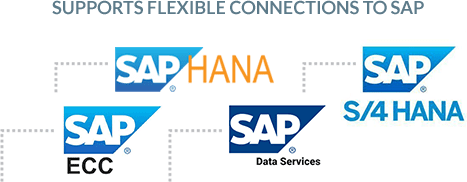
Support for flexible connections to SAP
BryteFlow supports flexible connections to SAP including: Database logs, ECC, HANA, S/4HANA and SAP Data Services. It also supports Pool and Cluster tables. Import any kind of data from SAP into S3 with BryteFlow. It will automatically create the tables on Amazon S3 so you don’t need to bother with any manual coding.
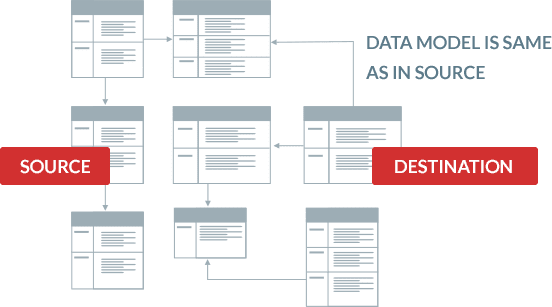
BryteFlow creates a data lake on S3 so the data model is as is in source – no modification needed
BryteFlow converts various SAP domain values to standard and consistent data types on the destination. For instance, dates are stored as separate domain values in SAP and sometimes dates and times are separated. BryteFlow provides a GUI to convert these automatically to a date data type on the destination, or to combine date and time into timestamp fields on the destination. This is maintained through the initial sync and the incremental sync by BryteFlow.

Can your data get automatic catch-up from network dropout?
If there is a power outage or network failure will you need to start the SAP data replication to S3 process over again? Yes, with most software but not with BryteFlow. You can simply pick up where you left off – automatically.
Simplify SAP Data Integration
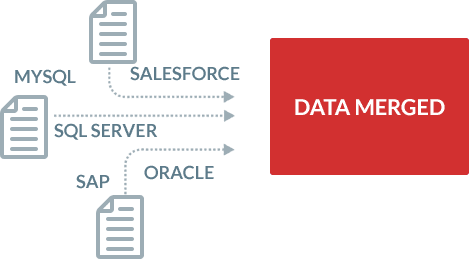
Can your SAP data be merged with data from other sources?
With BryteFlow you can merge any kind of data from multiple sources with your data from SAP for Analytics or Machine Learning.
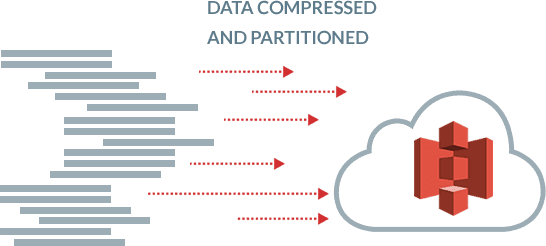
Load data fast with smart partitoning and compression
BryteFlow Ingest provides parallel sync at the initial ingest of data and compresses and partitions data so it can be loaded extremely fast. This has minimal impact on source and the SAP data replication proceeds smoothly. Even in the case that your data replication is interrupted by a network outage, your data replication just starts from the last partition that was being ingested instead of the beginning.
Since BryteFlow Ingest compresses and stores data on Amazon S3 in smart partitions you can run queries very fast even with many other users running queries concurrently. It eliminates heavy batch processing, so your users can access current data, even from heavy loaded EDWs or Transactional Systems.
Build a Data Lakehouse on Amazon S3 without Hudi or Delta Lake
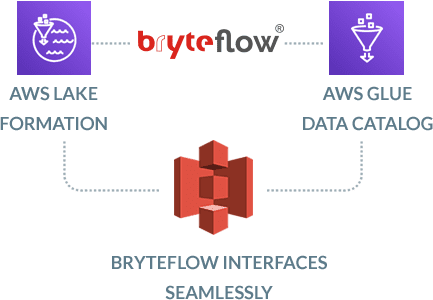
BryteFlow interfaces seamlessly with AWS Lake Formation and Glue Data Catalog for optimal functioning
BryteFlow interfaces seamlessly with AWS Lake Formation and adds automation to the mix so you can deploy an S3 data lake 10x faster while taking advantage of everything AWS Lake Formation has to offer, including finer grain access control.
BryteFlow also interfaces directly with the Glue Data Catalog via API. Information in the Glue Data Catalog is stored as metadata tables and helps with ETL processing. BryteFlow enables automated partitioning of tables and automated populating of the Glue Data Catalog with metadata so you can bypass laborious coding and extract and query data faster.

About SAP
SAP is an acronym for Systems Applications and Products in Data Processing. SAP is an Enterprise Resource Planning) software. It consists of a number of fully integrated modules, which cover most business functions like production, inventory, sales, finance, HR and more. SAP provides information across the organization in real-time adding to productivity and effiency. SAP legacy databases are typically quite huge and sometimes SAP data can be challenging to extract.
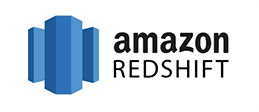
About Amazon Redshift
Amazon Redshift is the fully managed , petabyte scale cloud data warehouse of AWS. Amazon Redshift is characterized by its super fast speed in executing queries against large datasets aided by its Massively Parallel Processing and columnar database. Redshift is comprised of nodes (computing resources) that are organized in clusters. Each Redshift cluster has its own processing engine and at least one database. On Redshift, processing power can be scaled up immediately by adding more nodes to your cluster or even spinning up more clusters.

